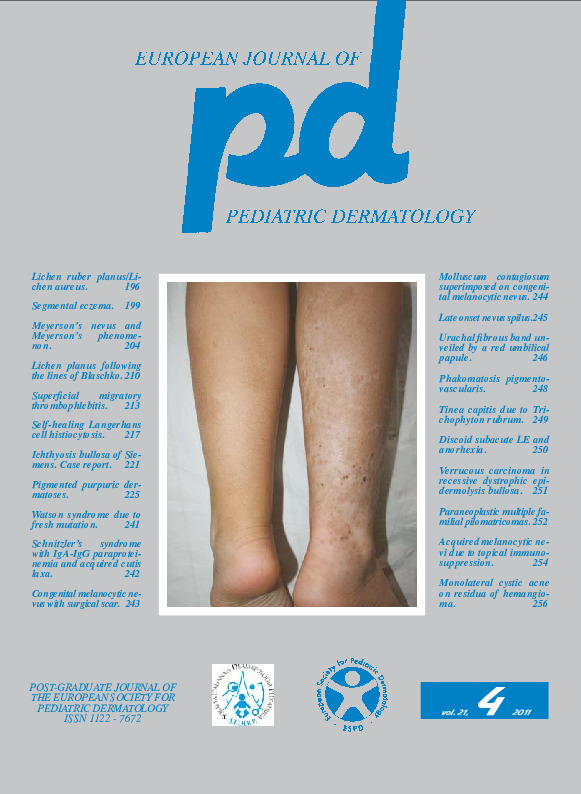Pigmented purpuric dermatoses.
Downloads
How to Cite
Bonifazi E., Milano A., Garofalo L. 2011. Pigmented purpuric dermatoses. Eur. J. Pediat. Dermatol. 21 (4):225 -39.
pp. 225 - 239
Abstract
The pigmented purpuric dermatoses are characterized from a clinical point of view by yellow-brownish patches, on which stand out red dots traditionally reminiscent of cayenne pepper, and by a chronic evolution and histologically by capillaritis with extravasation of erythrocytes. The medical records of 39 cases of pigmented purpuric dermatoses under the age of 13 years were reviewed and the answers to a questionnaire sent to families at a distance of 5-15 years after the last visit were recorded. In children the most common variant is Schamberg's disease, which in 25% of cases occurs in the segmental form, followed by lichen aureus which in our series is always unilateral, whereas eczematide-like purpura and purpura annularis telangiectodes are rare. These forms are probably clinical variants of a single phenotype. While clinical and histological features are characteristic, the etiology of these forms is still obscure. We never identified in our cases favoring or precipitating factors, although we point out the simultaneous presence of scleroderma and lichen aureus on the same limb and the onset of Crohn's disease 14 years after the cure of Schamberg's disease.Keywords
Pigmented purpuric dermatosis, Schamberg’s disease, lichen aureus, Eczematide-like purpura, Purpura anularis telangiectodes

